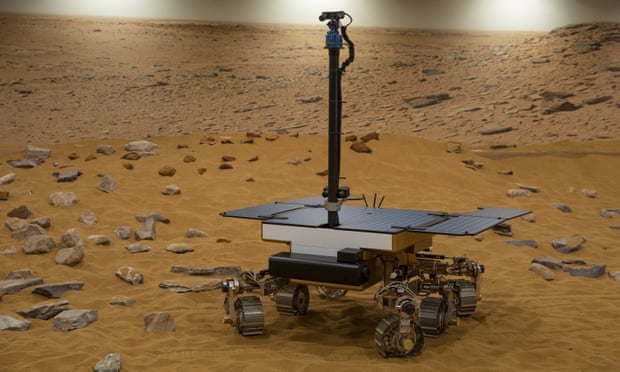Space engineers are racing against time to fix major faults in the robot probe they plan to send to Mars next year. The complex parachute system that should slow ExoMars – Europe’s largest ever planetary mission – as it plunges into the Martian atmosphere failed catastrophically during recent tests.
As a result, the European Space Agency has called for emergency help from Nasa space engineers to help them save their stricken mission. New parachutes are now being tested at the US Jet Propulsion Laboratory in Pasadena and will be subject to high-altitude trials in two or three months.
“It is going to be very, very tight getting the probe ready for next summer’s launch,” said ExoMars’s manager Pietro Baglioni. “I think we have only got a 50-50 chance we will be able to go ahead as scheduled.”
ExoMars is to be launched on a Russian rocket from Baikonur in Kazakhstan, carrying a British-built robot rover – named after the DNA pioneer Rosalind Franklin – that will trundle across the Martian landscapes. Using a drill capable of burrowing two metres below the surface, it will retrieve material that has been shielded from the intense radiation that bombards Mars. This material may contain evidence of past life on the planet.
But the mission – whose costs have spiralled from a few hundred million euros to more than a billion – has suffered major setbacks over the past two decades. In 2016, for example, delays to key equipment delivery forced Esa to delay ExoMars’s launch from 2018 to 2020. In addition, a separate test mission – to try out landing technology for ExoMars – crashed on the planet because of a computer malfunction. Since then, engineers have struggled to rectify the mission’s problems, only to be assailed by new ones – in particular flaws that have been found with its parachutes.
ExoMars will first use a heat shield to slow its approach to Mars from 21,000 to 1,700kph. Then a 15-metre wide parachute will be deployed to slow it to around 400kph. This will be jettisoned before a second 35-metre chute opens up. After it is jettisoned – about a kilometre above ground – a retro-rocket will ignite and take the two-tonne craft gently on to the Martian surface.
“The entire sequence from atmospheric entry to landing will take only six minutes,” said Baglioni. “There is a great deal that can go wrong in that time, however.”
Earlier this year, engineers tested ExoMars parachutes by dropping them from a balloon at an altitude of 30 kms where the thin air mimics the atmosphere at the surface of Mars. Both the 15-metre and the 35-metre parachutes tore as they were deployed. Engineers made adjustments and tested the chutes again. This time, they tore catastrophically.
The European Space Agency has since sought the help of Nasa, which has most expertise in landing spacecraft on Mars, and design changes have been made to the parachutes. “Tests at JPL on the new chutes this month have gone well,” said Baglioni. “However, the crunch will come when we repeat the high-altitude tests in February. If the parachutes pass this test, we will have a tight but plausible timetable to get them fitted to ExoMars. But if further tests or changes are needed, then it will get very tricky. I think we have a 50-50 chance of making our launch window between 26 July and 12 August.”
If Esa does not make that deadline, the next chance to launch ExoMars will not come until 2022, a delay that will further increase costs.








































admin in: How the Muslim Brotherhood betrayed Saudi Arabia?
Great article with insight ...
https://www.viagrapascherfr.com/achat-sildenafil-pfizer-tarif/ in: Cross-region cooperation between anti-terrorism agencies needed
Hello there, just became aware of your blog through Google, and found ...